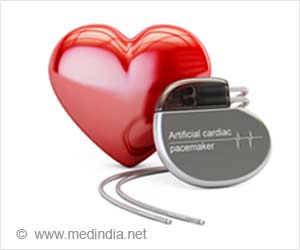A Belgium-based technology company in southern Belgium is bringing into the giant US market a revolutionary gadget that will top the others: an anti-migraine headband.

Migraine, a deep headache which develops behind the eyes and can last for days, is estimated to stalk to some degree the lives of about one in seven adults around the world, World Health Organization data shows.
It appears to be less common in the Far East, but overall affects up to three times more women than men owing to differences in hormonal activity.
The band, developed by the Belgian company Cefaly Technology, is worn across the forehead, and sends electric currents to facial nerves.
Although the device is not a cure for severe headaches, the manufacturers believe it could stop the transition from "episodic" migraines to the more severe "chronic" category.
The WHO says that migraine is one of the top 20 causes of disability in terms of years of healthy life lost.
Advertisement
According to Cefaly Technology's managing director Pierre Rigaux, while the headband is already on the European market, the long-awaited FDA approval will open the way to a 25-percent boost in sales over the next five years.
Advertisement
Giles Elrington, the medical director of the National Migraine Centre, a British charity research centre, said that techniques targeting the patient's head, in contrast to the use of drugs affecting the whole body, will be a "huge area of development in coming years."
-- FDA approval is key --
Such stories are common in Europe's medical technology industry which is being driven by small businesses.
According to data compiled by MedTech Europe, an alliance of Europe's medical technology industry associations, the sector employed more than 575,000 people in 2012, and comprised almost 25,000 medical technology companies in the EU.
"European companies like this one are at the forefront of innovation," said MedTech Europe's chief executive Serge Bernasconi.
The United States accounts for 41 percent of the European medical technology export market, with China a distant second at 10 percent and Japan third, at seven percent.
The figures show the importance to small companies of obtaining FDA approval for those products which require it.
One of the creators of the migraine headband told the AFP that international technological developments in the field mean that "the course had been set" for the use of electrical stimulation to treat a number of pathologies, including headaches and insomnia.
Before the FDA approval, Cefaly Technology's short-term prospects in Europe had been reasonable, with 80,000 anti-migraine devices sold before 2009, but its turnover was only 3.0 million euros ($4.13 million) for 2013.
That has now changed: the small company, based outside the town of Liege and with just 10 employees, expects to sell 10,000 units a month in the US market.
-- Non-invasive treatment --
Germany is by far Europe's leading exporter of medical technology, however statistics suggest smaller countries Netherlands, Belgium, Ireland and Switzerland, are punching above their weight.
The reason for that, according to Bernasconi, is more administrative than cultural: medical multinationals often have their headquarters or production centres in these countries, and med-tech start-ups tend to orbit around them.
Europe's highly decentralised regulatory system may also play a role, with the myriad national regulatory bodies creating a more nimble and responsive landscape than the large federal system in place in the United States.
As a result, new technologies can be introduced in Europe years ahead of distribution in the United States, although a shortage of capital to support research can push European countries to head across the Atlantic, cap in hand.
Founded in 2004 by a 58-year-old medical doctor and an engineer, Cefaly Technology took its first steps by researching the area of sports medicine, a field in which electrical stimulation of muscles was nothing new.
The challenge for the company was to apply those techniques to the external stimulation of nerves, where electrodes had traditionally been implanted to be effective -- for example, into the spinal cord to treat chronic pain.
Rigaux believes that that research was a turning point, because US authorities "immediately saw a new treatment, which was non-invasive and not involving drugs, as a positive."
Source-AFP









